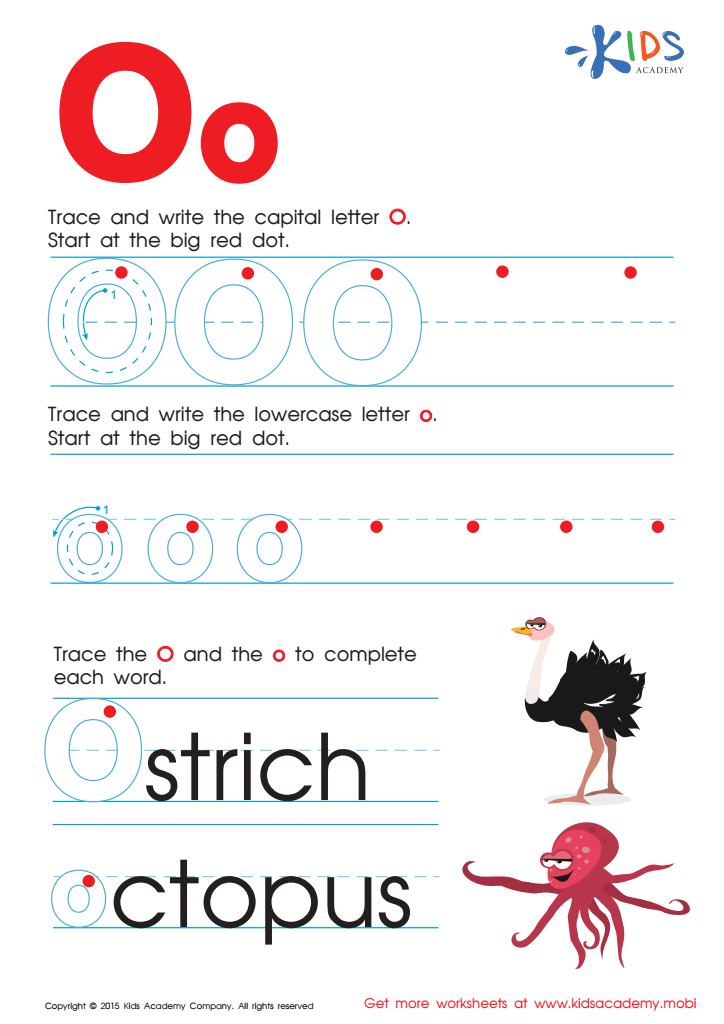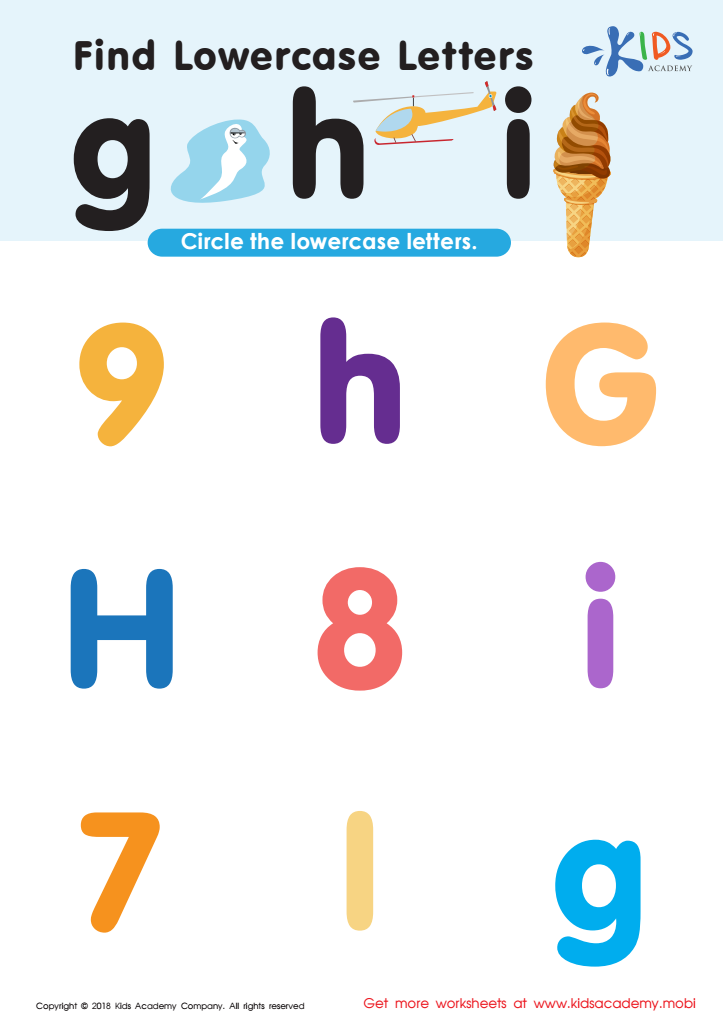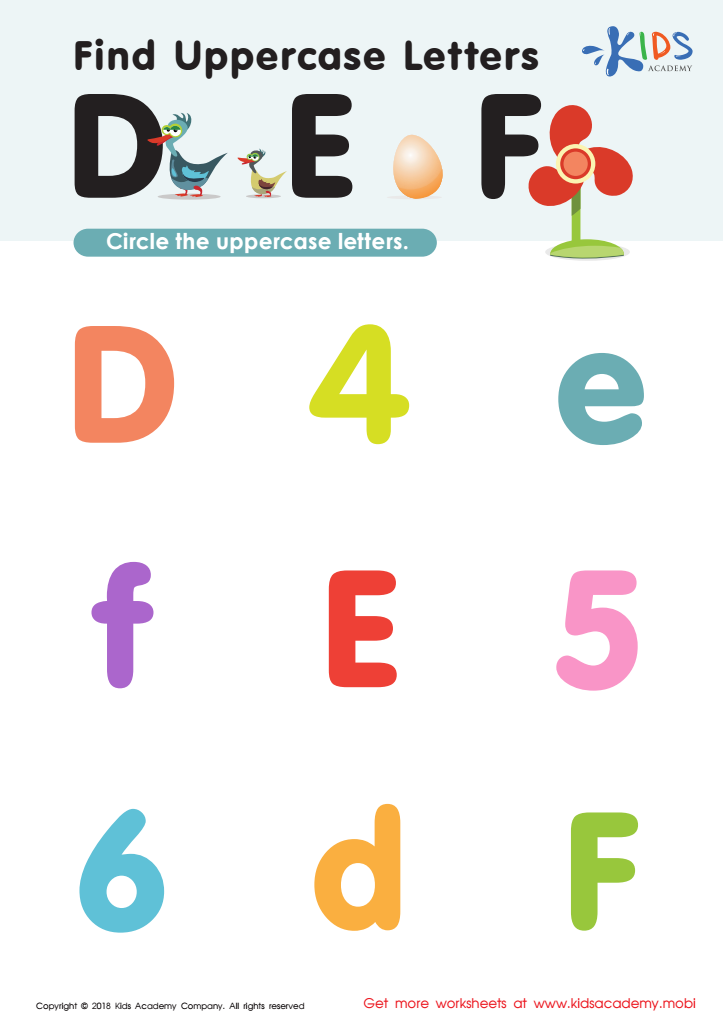Hand-eye Coordination Normal Letter Recognition Worksheets for 5-Year-Olds
6 filtered results
-
From - To
Enhance your child's hand-eye coordination and letter recognition skills with our engaging worksheets designed specifically for 5-year-olds. These printable activities foster the perfect blend of physical dexterity and cognitive development as children learn to identify and form letters. Dynamic exercises include tracing, coloring, and matching, promoting active participation and fun while developing essential pre-reading skills. Each worksheet is thoughtfully created to support young learners in navigating the alphabet smoothly, setting a solid foundation for future literacy endeavors. Explore our collection today and watch your child's confidence soar as they master letter recognition through enjoyable and interactive learning experiences!


Letter O Tracing Page


Find Lowercase Letters g h i Worksheet


Letter P Tracing Page


Letter H Tracing Page


Find Uppercase Letters D, E, and F Worksheet


Letter D Tracing Page
Hand-eye coordination and normal letter recognition are crucial skills for 5-year-olds, forming the foundation for their academic success and daily interactions. Parents and teachers should prioritize the development of these skills for several reasons.
Firstly, hand-eye coordination is essential for many tasks, from writing and drawing to participating in sports. Improved coordination leads to greater confidence in physical activities, fostering a positive self-image and encouraging continued skill development.
Secondly, normal letter recognition is a fundamental prerequisite for reading and writing. At this age, children must be able to identify letters to progress to phonics and word formation, which are critical for literacy. Early letter recognition bolsters vocabulary development and comprehension, both vital for effective communication.
Furthermore, the intersection of hand-eye coordination and letter recognition can enhance fine motor skills, impacting a child's ability to perform everyday tasks such as buttoning clothing or using utensils, promoting independence.
By nurturing these skills, parents and teachers create a supportive learning environment, leading to academic readiness and emotional well-being. Investing time in activities that enhance hand-eye coordination and letter recognition not only promotes cognitive skills but also fosters a love for learning, setting the stage for lifelong educational success.
 Assign to My Students
Assign to My Students
















